Abstract
Knowing the reasons some physicians do not adhere to the disease prevention and treatment recommendations of expert committees can assist in the development of future recommendations more likely to be adopted by physicians. The authors describe the attitudes and practices of physicians relative to tuberculosis prevention in DeKalb County, GA. Tuberculosis is an important problem in the county, which includes part of the City of Atlanta, as well as suburban areas. Questionnaires for anonymous reply were mailed to 1,621 physicians in the county in 1991, and 848 (53 percent) were completed and returned. The final sample was 793 physicians, who were grouped into 5 specialty areas. Primary care physicians were the group most commonly involved in specific tuberculosis screening and prevention activities. Medical and pediatric specialists, surgeons, obstetricians-gynecologists, and other physicians were significantly less likely to be involved in such activities. Given that primary care physicians constitute a decreasing proportion of physicians in the United States, the findings suggest the importance of ensuring that future strategies for tuberculosis prevention take into account the increasingly specialized nature of the medical practice environment.
Full text
PDF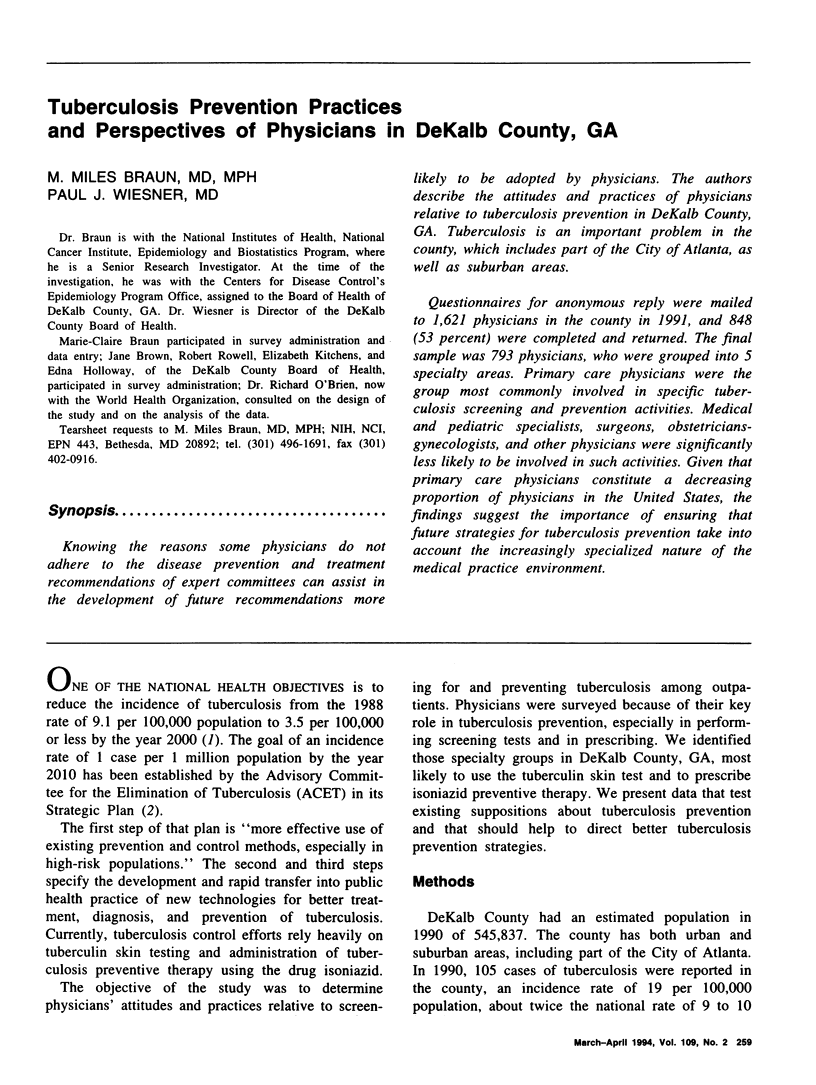
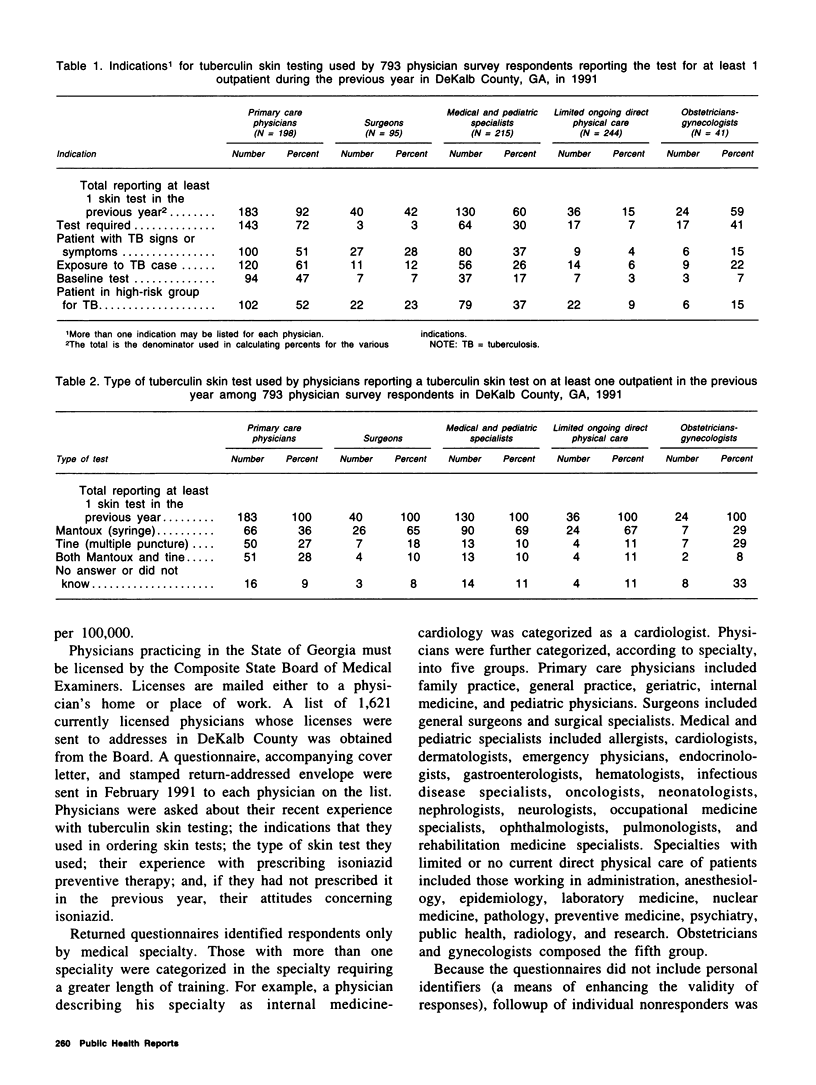
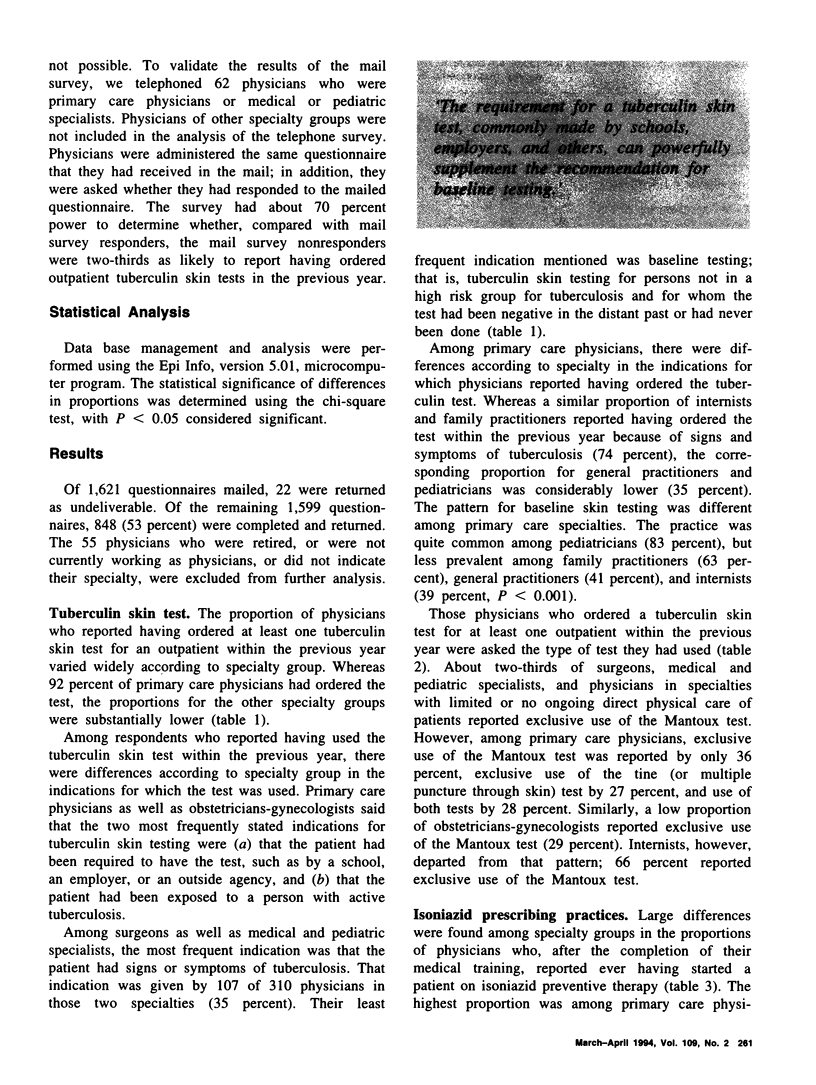
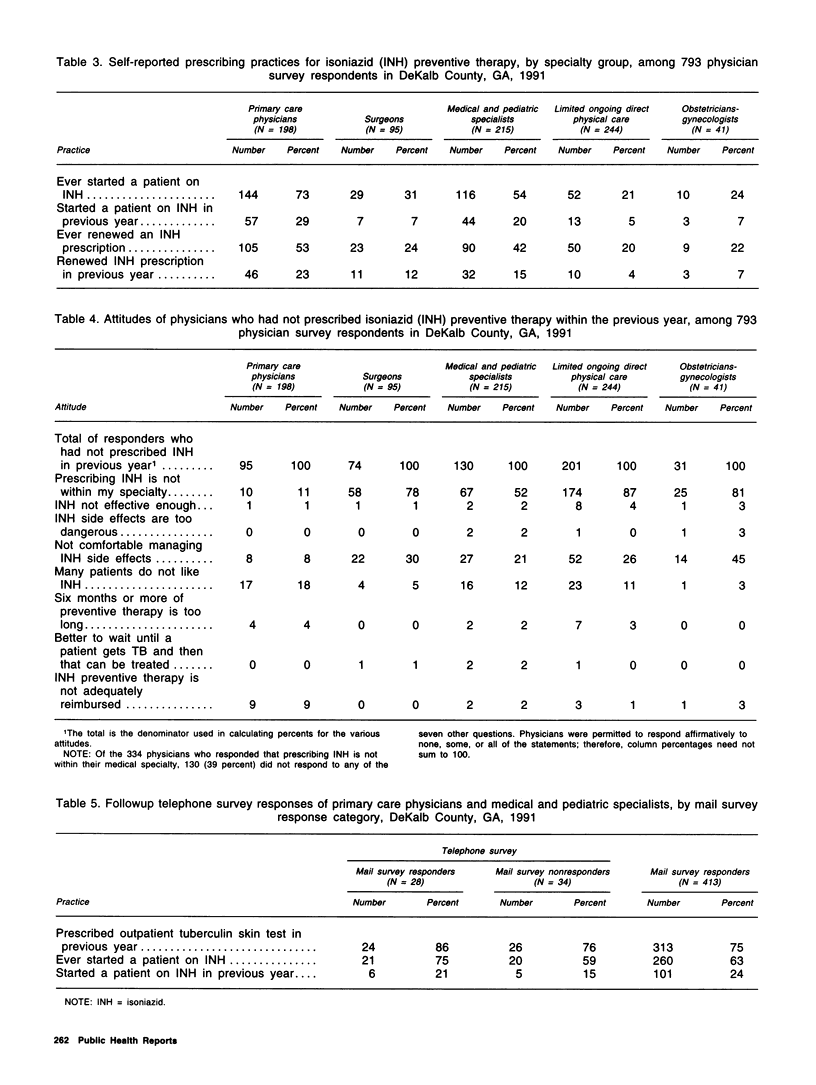
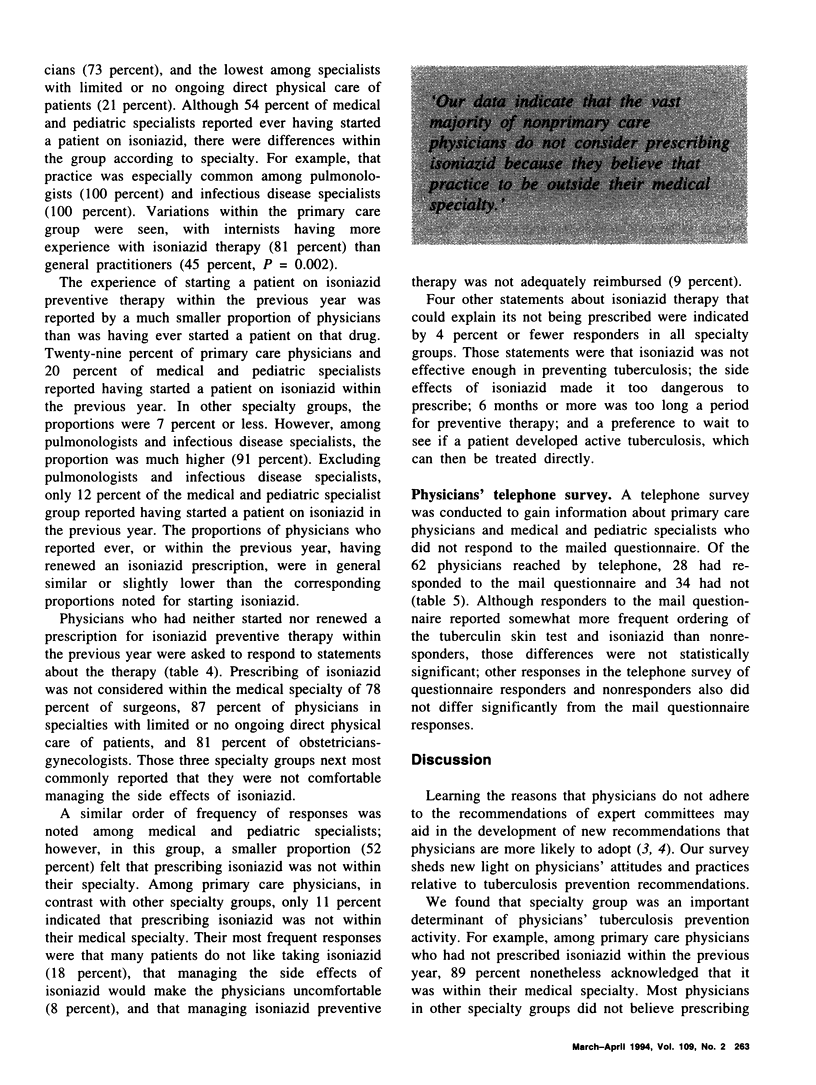
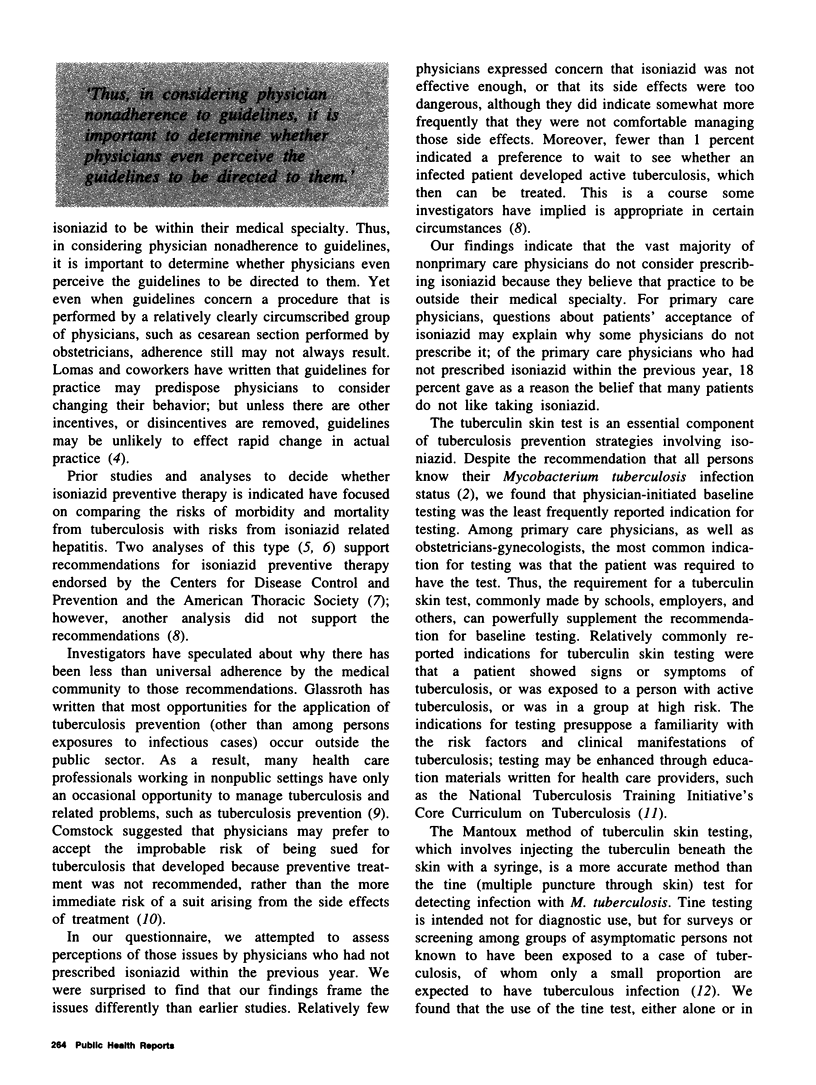
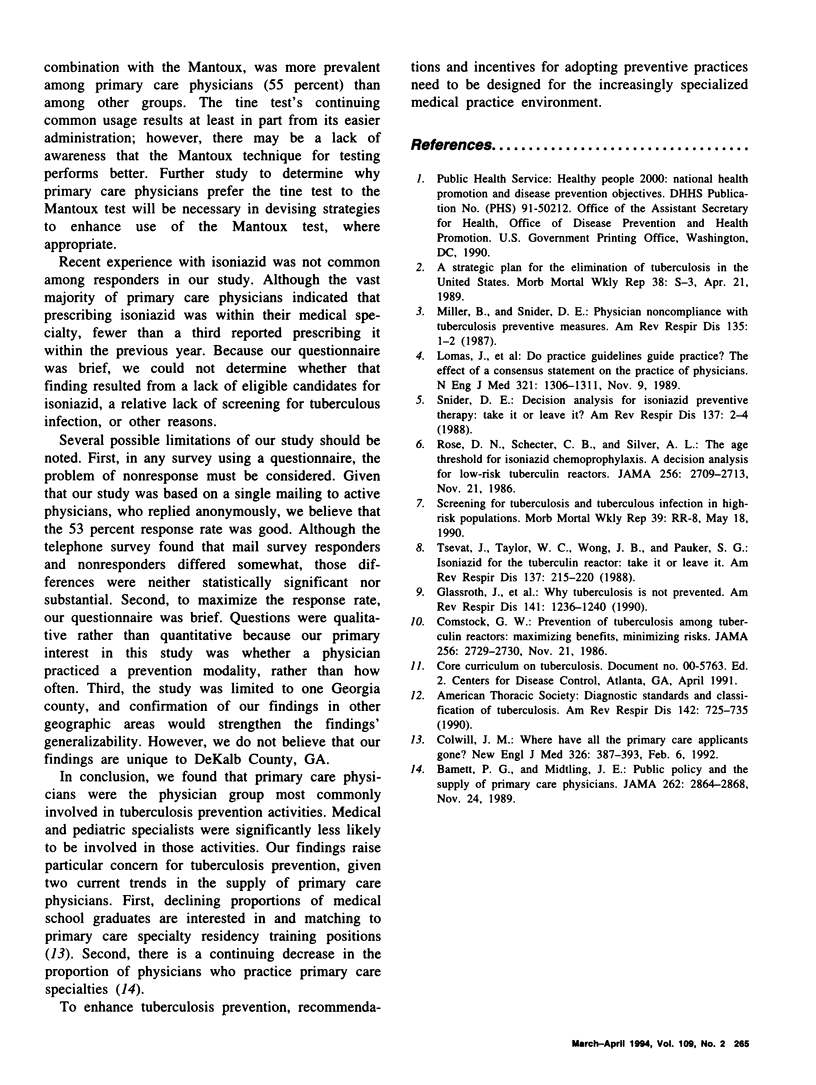
Selected References
These references are in PubMed. This may not be the complete list of references from this article.
- Barnett P. G., Midtling J. E. Public policy and the supply of primary care physicians. JAMA. 1989 Nov 24;262(20):2864–2868. [PubMed] [Google Scholar]
- Colwill J. M. Where have all the primary care applicants gone? N Engl J Med. 1992 Feb 6;326(6):387–393. doi: 10.1056/NEJM199202063260606. [DOI] [PubMed] [Google Scholar]
- Comstock G. W. Prevention of tuberculosis among tuberculin reactors: maximizing benefits, minimizing risks. JAMA. 1986 Nov 21;256(19):2729–2730. [PubMed] [Google Scholar]
- Glassroth J., Bailey W. C., Hopewell P. C., Schecter G., Harden J. W. Why tuberculosis is not prevented. Am Rev Respir Dis. 1990 May;141(5 Pt 1):1236–1240. doi: 10.1164/ajrccm/141.5_Pt_1.1236. [DOI] [PubMed] [Google Scholar]
- Lomas J., Anderson G. M., Domnick-Pierre K., Vayda E., Enkin M. W., Hannah W. J. Do practice guidelines guide practice? The effect of a consensus statement on the practice of physicians. N Engl J Med. 1989 Nov 9;321(19):1306–1311. doi: 10.1056/NEJM198911093211906. [DOI] [PubMed] [Google Scholar]
- Miller B., Snider D. E., Jr Physician noncompliance with tuberculosis preventive measures. Am Rev Respir Dis. 1987 Jan;135(1):1–2. doi: 10.1164/arrd.1987.135.1.1. [DOI] [PubMed] [Google Scholar]
- Rose D. N., Schechter C. B., Silver A. L. The age threshold for isoniazid chemoprophylaxis. A decision analysis for low-risk tuberculin reactors. JAMA. 1986 Nov 21;256(19):2709–2713. [PubMed] [Google Scholar]
- Snider D. E., Jr Decision analysis for isoniazid preventive therapy: take it or leave it? Am Rev Respir Dis. 1988 Jan;137(1):2–4. doi: 10.1164/ajrccm/137.1.2. [DOI] [PubMed] [Google Scholar]
- Tsevat J., Taylor W. C., Wong J. B., Pauker S. G. Isoniazid for the tuberculin reactor: take it or leave it. Am Rev Respir Dis. 1988 Jan;137(1):215–220. doi: 10.1164/ajrccm/137.1.215. [DOI] [PubMed] [Google Scholar]


